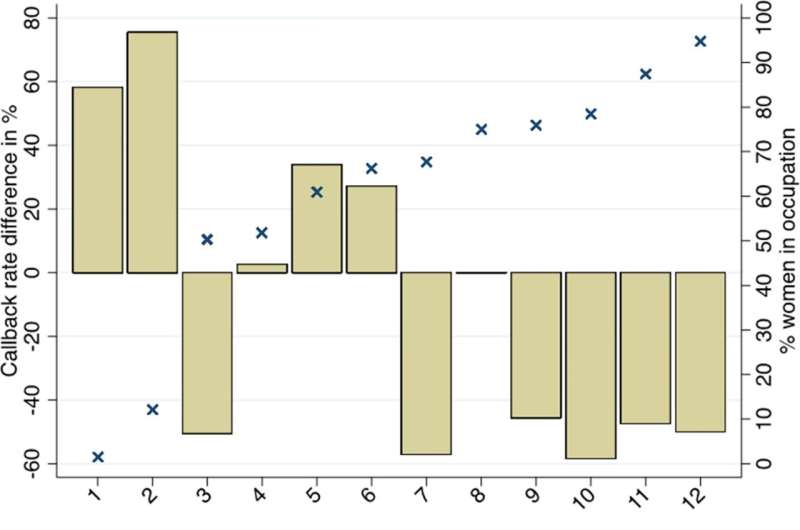Gender stereotypes lead recruiters to discriminate against men

Men who apply for female-dominated jobs face a significant chance of being rejected at application stage, suggesting the existence of deep-rooted gender stereotypes.
After submitting more than 12,000 resumes to over 4,000 job adverts in Sydney, Melbourne and Brisbane, a study by King's Business School and Monash University's Business School in Victoria, Australia, found that male applicants received around 40% fewer call-backs for roles that are typically dominated by females than women with identical qualifications and experience.
The large-scale study, led by Dr. Mladen Adamovic, senior lecturer in Organizational Behavior and Human Resource Management, involved drafting and submitting thousands of resumes for roles in occupations that are defined as either male-dominated, female-dominated, or gender-balanced.
Using a variety of traditionally male and female names from different ethnic groups, and ensuring the applicants were equally qualified, researchers compared the call-back rate for men with that for women.
While the primary focus was to see whether male job applicants are affected by occupational gender segregation, the research also showed that men received around 50% more call-backs than women for male-dominated jobs, confirming the widely evidenced gender bias in the recruitment process against women for roles that have been traditionally dominated by men.
This comes as politicians, businesses, unions and key stakeholders met in Canberra in August, to try and come up with solutions to Australia's economic problems, including the gender pay gap, which has risen to 14.1% in 2022—an increase of 0.3% since November last year.
"Research into occupational gender segregation often focuses on the employment prospects of female applicants for male-dominated occupations. Not much was known about the relationship between occupational gender segregation and the employment prospects of male applicants. Our findings suggest that gender discrimination against both men and women in recruitment is caused by occupational gender segregation," explained Mladen.
Occupational gender segregation refers to the inequal distribution of men and women across different occupational categories.
The study focused on female-dominated occupations that included receptionist, waitstaff, administrative and sales assistant, human resource management professional, and cleaner. To allow comparisons, male-dominated occupations were also included such as construction laborer and electrician, as well as gender-balanced roles in marketing and accountancy.
The research found that men were least likely to get a call-back when applying for the role of clerk/administrative worker, sales assistant, receptionist or cleaner.
In light of the findings, researchers are calling for government, corporate and educational initiatives to help eliminate occupational gender segregation.
Dr. Andreas Leibbrandt, co-author of the research and Professor in Economics at Monash University's Business School, said, "Occupational gender segregation is unlikely to disappear unaided. More government and business initiatives, which we often observe for the STEM professions, are necessary for other professions to tackle the issue of occupational gender segregation and hiring discrimination."
The researchers also point out that while it is important to provide opportunities for people to access higher-paid jobs, it is also important to enable people to find roles which best suit them and that by diversifying the talent in their workforce, organizations benefit from different perspectives, increased creativity and fresh ideas.
The paper, "A large-scale field experiment on occupational gender segregation and hiring discrimination," is published in Industrial Relations: A Journal of Economy and Society.
More information: Mladen Adamovic et al, A large‐scale field experiment on occupational gender segregation and hiring discrimination, Industrial Relations: A Journal of Economy and Society (2022). DOI: 10.1111/irel.12318
Provided by King's College London



















